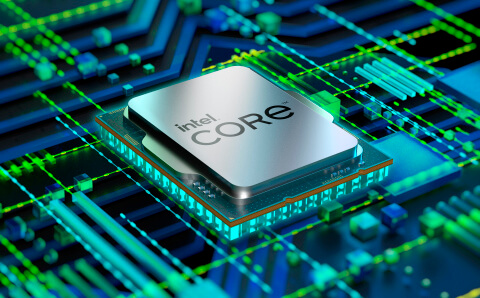
Intel made several major announcements, including the development of new chips, at its inaugural Intel Innovation event. The announcements spanning new products, developer tools, and technologies underscore the company’s renewed focus on empowering the open ecosystem, and ensuring developers have the choice to use the tools and environments that they perfect.
“Developers are the true superheroes of the digitized world – a world which is underpinned by semiconductors. We will not rest until we’ve exhausted the periodic table, unlocking the magic of silicon and empowering developers so that, together, we can usher in a new era of innovation,” said Pat Gelsinger, Intel CEO.
Intel is hoping to regain its lead in the computing chips industry after losing out to rivals Apple Inc and Advanced Micro Devices in more recent times. The rise of several other chipmakers outside the US and with some manufacturers now choosing to develop their own chips have also caused Intel to experience some derailment in its ambitions.
Intel and chips have gone hand in hand since day one. The company announced earlier this year that it will spend US$20 billion to build two major factories in Arizona to deal with the chip shortage. Interestingly, Gelsinger also ruled out opening a factory in the UK due to Brexit.
As such, the announcement of its 12th generation Intel Core chips for PCs will include 60 processors, set to power more than 500 designs from an expansive stable of partners. The new performance hybrid architecture, the first built on Intel 7 processor, delivers scalable performance from 9 to 125 watts, to power every PC segment from laptops to desktops and out to the edge.
“The performance hybrid architecture of 12th Gen Intel Core processors is an architectural shift made possible by close co-engineering of software and hardware that will deliver new levels of leadership performance for generations. This begins with the arrival of our flagship Core i9-12900K – the world’s best gaming processor – and you will see even more incredible experiences as we ship the rest of the 12th Gen family and beyond,” said Gregory Bryant, executive vice president and general manager of the Client Computing Group at Intel.
The company now hopes it can persuade software developers to write code for its chips. Data scientists can now iterate, visualize and analyze complex data at scale with the highest memory configuration of any similar offerings with this new solution powered by Intel Core and Intel Xeon architectures. Combining workstation hardware and Intel one API AI Analytics toolkit to enable “out of the box” AI development, this solution is now available on Linux-based workstation PCs from Dell, HP, and Lenovo. Additionally, Microsoft and Intel have partnered to bring a complete data science toolchain to Windows 11, which will be available first on the new Surface Laptop Studio.
Intel, Google, and data center chips
Intel is also working with Google Cloud to create a new category of chips that Intel hopes will revolutionize the cloud computing market. The new chip, called Mount Evans, will be sold to others beyond Google, reflective of the way that cloud computing providers operate.
Reuters reported that they build huge data centers full of powerful physical computers — and sell virtual slices of those machines to other businesses, who in turn get better bang for their buck than building the machines themselves. For cloud providers, tasks like setting up the virtual machines and getting customer data to the right place are essentially considered overhead costs.
Reuters highlighted how the Mount Evans chip, which Google and Intel have dubbed an infrastructure processing unit (IPU), separates out those tasks from the main computing tasks and speeds them up. Doing so also helps ensure the safety of those functions against hackers and adds flexibility to the data center.
Intel has also made AI more accessible and scalable for developers through extensive optimizations of popular libraries and frameworks on Intel Xeon Scalable processors. Intel’s investment in multiple AI architectures to meet diverse customer requirements, using an open standards-based programming model, makes it easier for developers to run more AI workloads in more use cases.
Among the AI innovations highlighted by Intel include the partnership with Alibaba to build an end-to-end toolkit called DeepRec. DeepRec will facilitate deep learning training and deployment of recommendation systems – a workload that consumes a significant portion of all data center and cloud AI cycles while possessing diverse compute, memory, bandwidth, and network needs. With DeepRec, developers can easily load and update models, process embedding layers, leverage existing model zoos, and deploy extremely large-scale recommendation-based services with trillions of samples.
While Intel is hoping to once again ascend to the top of the semiconductor industry with these major announcements, it remains to be seen how impactful these reveals will actually be, given the fact that other chipmakers are also actively competing with each other in attempts to outpace the global chip shortfall that has hampered industries all year round.










